About Stem Cells
Stem Cells are the body’s raw materials — cells from which all other cells with specialized functions are generated. They are the reason you heal or not heal as efficiently, as the case may be.
Mesenchymal Stem Cells (MSCs)
MSCs are self-renewing, multipotent precursors to other cell types and tissues. Scientists have found MSCs in many tissues from young to old. As we age, we appear to have fewer MSCs with the older MSCs typically behaving differently from younger ones. MSCs have exciting potential, whether we use our own aged MSCs or a graft from postnatal sources.
MSCs have demonstrated indirect local effects (similar to paracrine activity) that appear to be active for many weeks – possibly longer. It is thought that they may be responding to their local environment and may be able to effect change and regeneration in a customized way the host cells may no longer be fully capable of.
Postnatal tissues have high concentrations of MSCs across multiple compartments/tissues and these MSCs exhibit a more robust secretome and more rapid cell division frequency and with a lower rate of teratogenesis.
Totipotent
Also known as Embryonic Stem Cells (ESCs), totipotent cells can become extraembryonic (placental cells/tissue). “Totipotent” means that these cells can differentiate into any type of cell or tissue which would indicate vast potential. However, due to the risk of teratogenesis and additional ethical concerns, this type of stem cell is unsuitable for therapeutics and using it is illegal in the United States.
Pluripotent
Pluripotent stem cells can differentiate into any of the cell types in a body. Pluripotent cells give rise to the endoderm, mesoderm, and ectoderm.
Multipotent
These cells give rise to many types of cells but are more limited than pluripotent cells. Multipotent stem cells are found in postnatal umbilical cord and placenta tissues, as well as in adult tissues. They serve as a reservoir of cells for growth and repair. Each type of multipotent stem cell gives rise to a limited range of cell types. These cells are more difficult to isolate for clinical use but are ethical. Examples of multipotent stem cells include hematopoietic stem cells (HSC) and mesenchymal stem cells (MSC).
MSC Differentiation
Mesenchymal Stem Cells tend to differentiate into connective tissue and other cells that are involved in organ repair including osteoblasts, chondrocytes, myocytes, and adipocytes. MSCs have also been observed to transdifferentiate into hepatocytes, neurons, and pancreatic islet cells in vitro when specific culture conditions and stimuli are applied.
